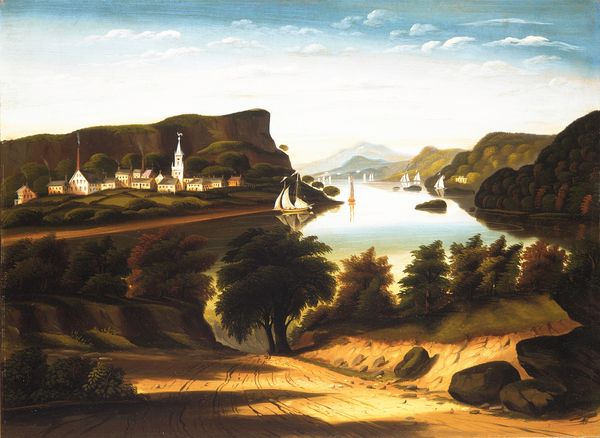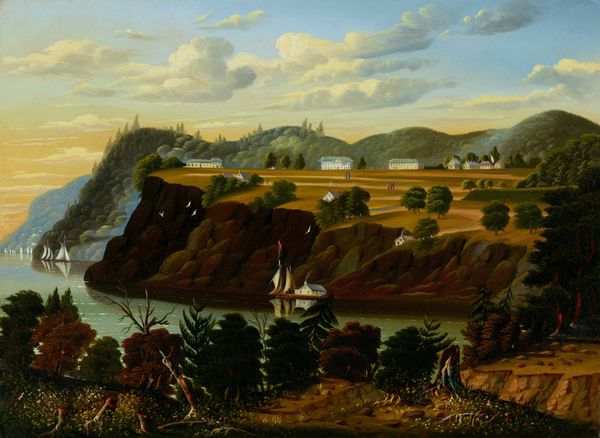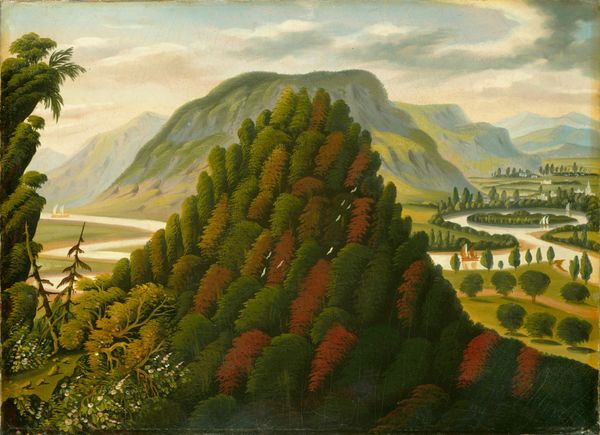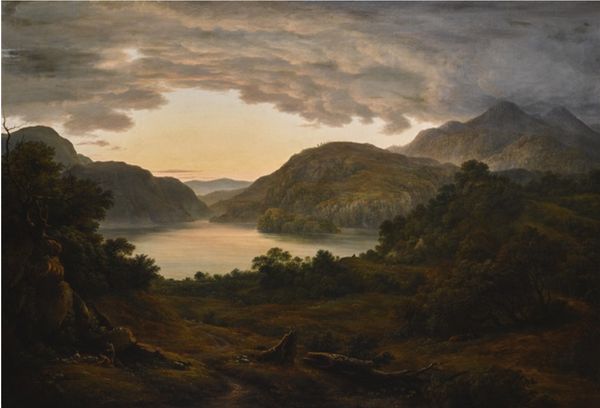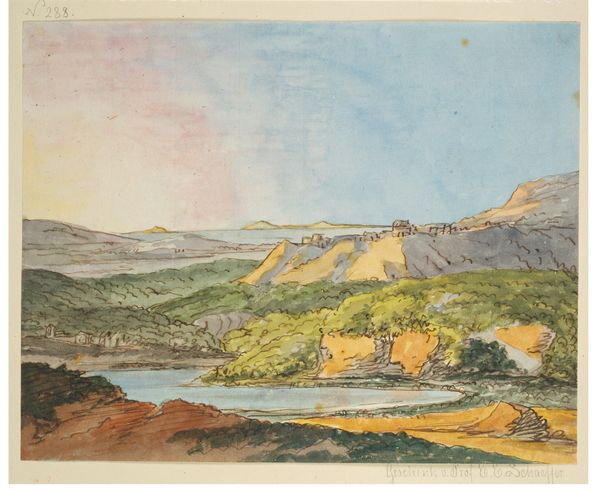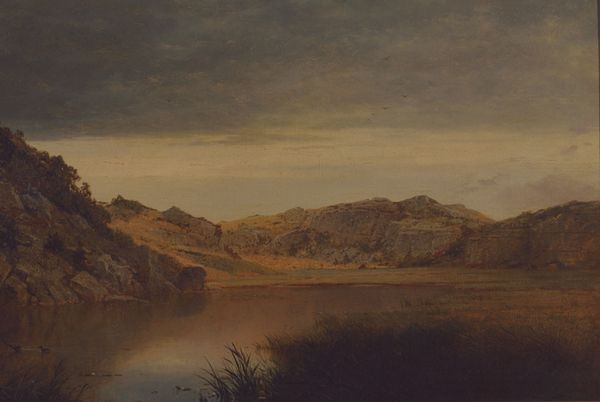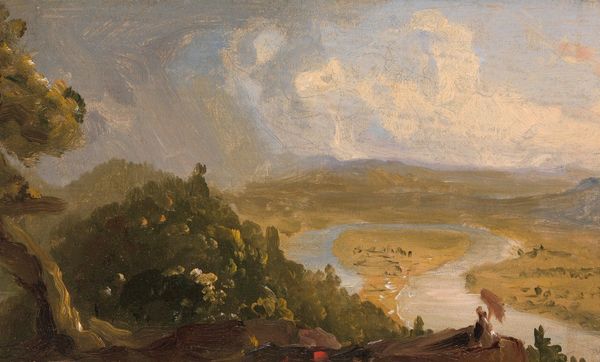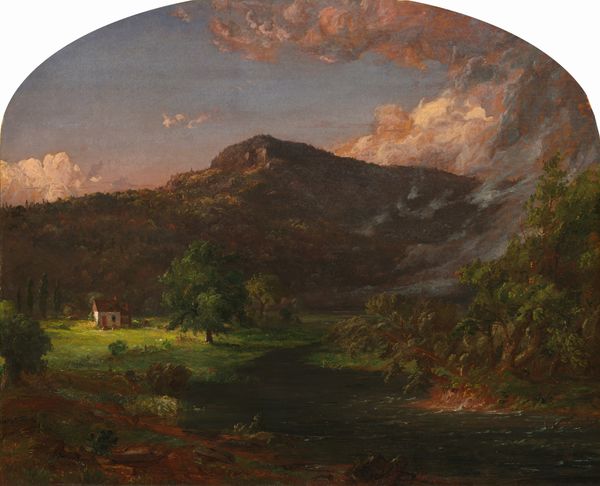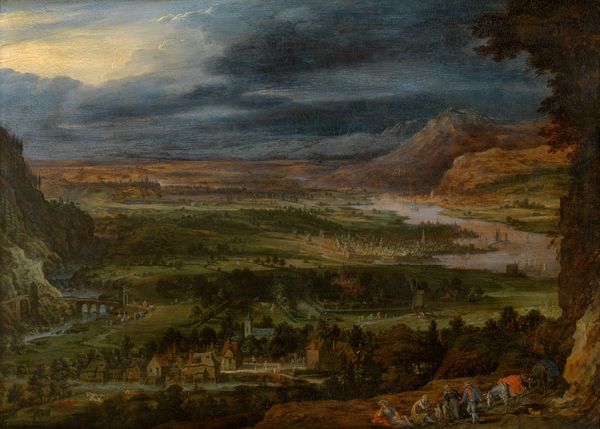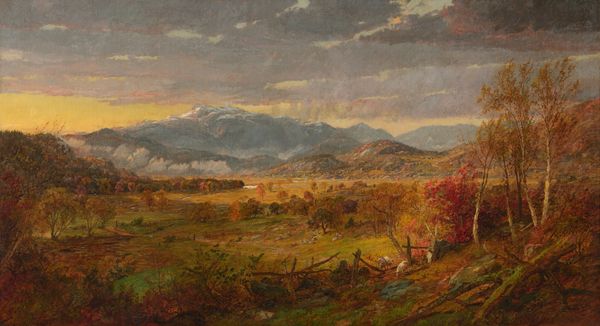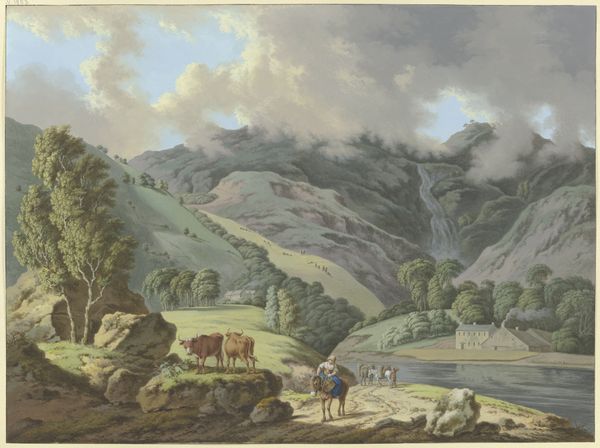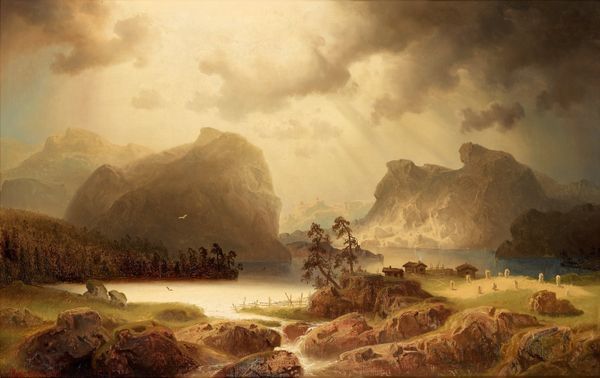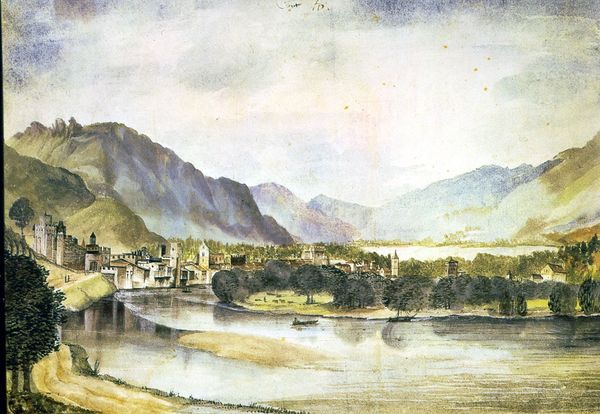
painting, oil-paint
#
painting
#
oil-paint
#
landscape
#
oil painting
#
naïve-art
#
naive art
#
hudson-river-school
#
watercolor
Dimensions: overall: 56.2 x 76.2 cm (22 1/8 x 30 in.) framed: 69.3 x 89.8 x 4.7 cm (27 5/16 x 35 3/8 x 1 7/8 in.)
Copyright: National Gallery of Art: CC0 1.0
Curator: Well, the first thing that strikes me about this painting, *Lake George and the Village of Caldwell*, thought to be by Thomas Chambers, mid-19th century, is the sort of dreamlike quality it possesses. Editor: It’s undeniably charming in its naivety. Look at the pronounced brushstrokes and somewhat simplified forms. It's definitely got a homemade quality. Were these canvases mass-produced at this time? Were they using pre-mixed paints, or grinding their own pigments? That texture suggests an interesting physicality to the painting's production. Curator: Interesting points. From an art historical perspective, Chambers is associated with the Hudson River School, though he departs significantly from its more academic, classically informed conventions. His work certainly embraces a different kind of American vision, wouldn’t you agree? Consider the politics of landscape in that era and how idealized and pastoral scenes reinforced a certain national identity. Editor: Right, it’s a far cry from a Bierstadt. The almost folk-art quality complicates those grand narratives, perhaps inadvertently challenging those established artistic hierarchies. Those slightly wonky houses, that rather stout church steeple…It’s not grandiosity we are observing; it is the materials that provide the foundation for the buildings and that small sailboat gliding across the lake. I am sure that painting such scenery fed directly into regional tourism too. Curator: Absolutely. There’s also a powerful element of promotion happening. These images helped shape perceptions of these developing regions, encouraging both settlement and leisure travel. And how accessible and approachable would that particular style have seemed? Editor: Exactly! The materiality of both the paint and the scene feel down to earth, don’t they? We see the impact of the industrial revolution from an entirely different vantage. More ordinary, even… and made accessible as both a subject of paintings and something you could do on the Lake yourself. Curator: That’s such an astute observation. It brings into focus how art functions as an active participant in broader socio-economic shifts. So much more than pretty picture. Editor: It always comes back to how something is *made* doesn't it? Whether it's paint or progress. Thanks for letting me ramble about manufacturing today. Curator: My pleasure.
Comments
No comments
Be the first to comment and join the conversation on the ultimate creative platform.
